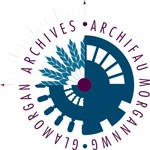The current cataloguing and conservation of the National Coal Board and pre-vesting colliery company records held at Glamorgan Archives has been made possible by a Wellcome Trust Research Resources Grant. The Wellcome Trust is a global charitable foundation dedicated to improving health and as such one of the project’s main aims has been to improve access to records related to medical and welfare issues. In this series of blog posts project archivist, Louise Clarke, highlights some of the types of material that you are able to find on this topic within the coalfield collection.
Disasters
It is often the large mining disasters that we most closely associate with death in the coal industry. One such disaster was that at Universal Colliery, Senghenydd, which occurred on 14 October 1913. The explosion, and subsequent release of poisonous gas, killed 439 miners, making the Senghenydd pit disaster the most lethal and tragic mining disaster in British history.

Statement showing details of compensation paid, 1915 (DPD/4/11/2/4)
As part of this project, a small number of items relating to the Senghenydd disaster have been catalogued, including a statement showing details of compensation and funeral expenses paid by the owners of Universal Colliery, Lewis Merthyr Consolidated Collieries. This statement lists each individual killed in the disaster, gives details of their name, occupation and age and notes whether they had any dependents.
Other items within the National Coal Board collection relating to the Senghenydd disaster include the minutes of the inquiry into the disaster, inquest proceedings and photographs which appeared in newspapers and as postcards within days of the tragedy.

Photograph of the funeral of the victims of the Senghenydd disaster, 1913 (DNCB/14/1/2/3)
